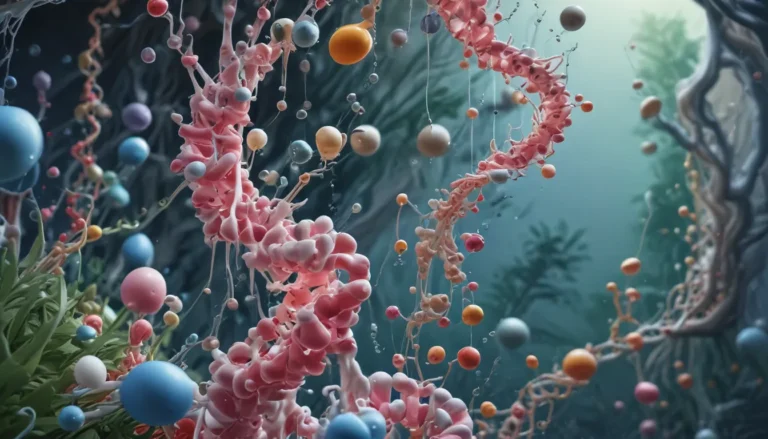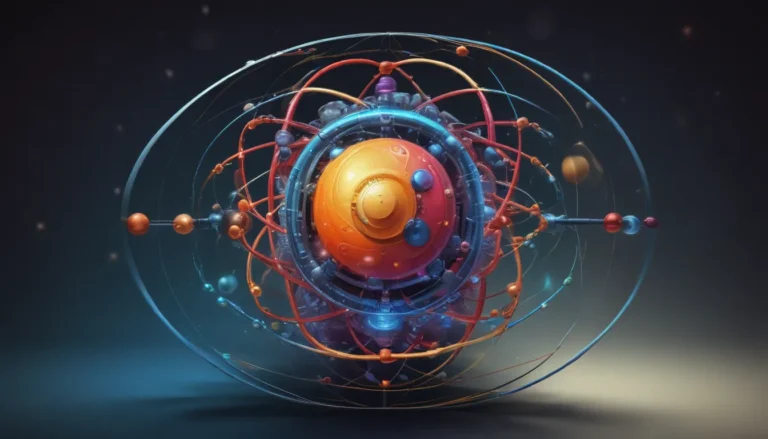A Note About Images: The images used in our articles are for illustration purposes only and may not exactly match the content. They are meant to engage readers, but the text should be relied upon for accurate information.
Are you fascinated by the intricate workings of the human body? Do you find chemistry intriguing? If so, you’re in for a treat as we explore the incredible world of eicosanoids. These remarkable molecules derived from essential fatty acids play a pivotal role in numerous physiological processes, from inflammation and pain to blood clotting and immune response. In this article, we will uncover 19 unbelievable facts about eicosanoids that will captivate your mind and shed light on their importance in maintaining overall health and well-being.
Understanding Eicosanoids: The Bioactive Lipids
Eicosanoids are a diverse group of bioactive lipids that serve as powerful signaling molecules in the body. They are derived from polyunsaturated fatty acids, including arachidonic acid, eicosapentaenoic acid, and docosahexaenoic acid. These molecules are not stored but produced upon demand, allowing for rapid signaling and response to physiological conditions or stimuli.
Through the enzymatic pathways, eicosanoids are classified into three major groups: prostaglandins, leukotrienes, and thromboxanes. Each of these classes has distinct functions, contributing to various physiological processes in the body.
The Impact of Eicosanoids on Health
-
Regulating Inflammation and Pain: Prostaglandins are key players in the inflammatory response, influencing pain perception, fever, and swelling. They can either promote or suppress inflammation, showcasing their intricate role in immune responses.
-
Allergic and Inflammatory Diseases: Leukotrienes are potent mediators of allergic reactions and contribute to the development of inflammatory diseases such as asthma and rheumatoid arthritis.
-
Blood Clotting and Cardiovascular Health: Thromboxanes play a crucial role in regulating platelet aggregation, blood clot formation, blood flow, and vascular tone. Eicosanoids influence cardiovascular health by modulating blood pressure and the formation of blood clots.
-
Cancer and Inflammatory Conditions: Some eicosanoids, particularly certain prostaglandins, exhibit potential anticancer properties by inhibiting tumor growth and promoting apoptosis. Imbalance in eicosanoid production can lead to chronic inflammation, cardiovascular diseases, and cancer.
The Role of Eicosanoids in Physiological Processes
-
Local and Systemic Effects: Eicosanoids can act locally at the site of their synthesis or have systemic effects by exerting actions on distant tissues and organs.
-
Immune Response Modulation: Eicosanoids play a crucial role in modulating the immune response by regulating the activation and migration of immune cells such as macrophages and lymphocytes.
-
Reproductive Processes: Prostaglandins play a significant role in reproductive processes, including ovulation, fertilization, and labor induction.
-
Skin Health and Wound Healing: Certain eicosanoids contribute to maintaining skin health by regulating immune responses in the skin, modulating wound healing processes, and influencing the development of skin diseases such as psoriasis.
Therapeutic Potential of Eicosanoids
Due to their involvement in various physiological processes and diseases, eicosanoids have become targets for pharmacological interventions. Nonsteroidal anti-inflammatory drugs (NSAIDs) and specific enzyme inhibitors are examples of therapeutic interventions that target eicosanoid pathways. Understanding the tight regulation of eicosanoid synthesis and their diverse functions opens up avenues for potential therapeutic strategies for a range of diseases.
Exploring Eicosanoids: The Path to Better Health
Eicosanoids are not only essential for their biological functions but also hold promise as therapeutic targets. By unraveling the complex pathways and interactions involved in eicosanoid synthesis and signaling, researchers can develop innovative treatments for diseases such as arthritis, asthma, and cardiovascular disorders. The intricate mechanisms of eicosanoids continue to captivate scientists, paving the way for groundbreaking discoveries in the field of molecular biology.
In conclusion, eicosanoids are small but mighty molecules with tremendous biological significance. Their impact on various physiological processes highlights the complexity of the human body and the importance of understanding these pathways for better health outcomes. The next time you encounter the term “eicosanoids,” appreciate the remarkable diversity and influence these molecules possess in maintaining overall well-being.
FAQs: Unveiling the Mysteries of Eicosanoids
Q: What are eicosanoids?
A: Eicosanoids are a group of signaling molecules derived from fatty acids that play a crucial role in regulating inflammation, immune response, and other physiological processes.
Q: How are eicosanoids produced in the body?
A: Eicosanoids are produced from arachidonic acid through enzymatic conversion by specific enzymes such as cyclooxygenases, lipoxygenases, and cytochrome P450 enzymes.
Q: Can eicosanoids be targeted for therapeutic purposes?
A: Yes, eicosanoids can be targeted for therapeutic purposes. Researchers are exploring drugs that modulate eicosanoid production and signaling to develop treatments for diseases such as arthritis, asthma, and cardiovascular disorders.
Embracing the World of Eicosanoids
Eicosanoids are truly remarkable molecules that deserve our attention and curiosity. From their role in regulating pain and inflammation to their influence on cardiovascular health and skin function, eicosanoids showcase the intricate balance of signaling pathways in the human body. Dive into the fascinating world of eicosanoids to uncover the mysteries and potential therapeutic possibilities that these bioactive lipids offer. Let’s embark on a journey of discovery and appreciation for the complex mechanisms that govern our biological functions through the lens of eicosanoids.






